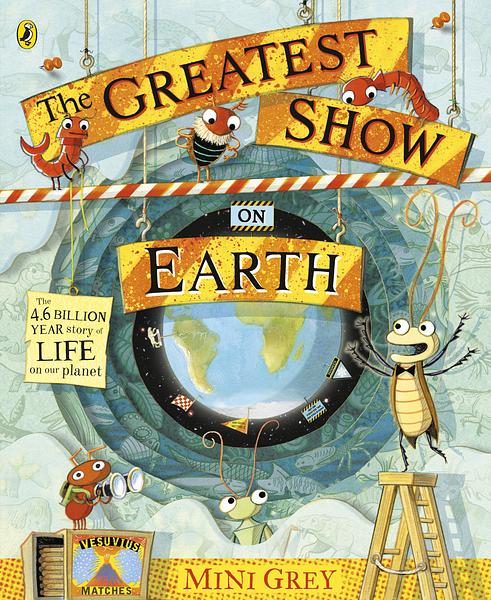
Inspired by a visit to the Oxford Museum of Natural History with my young son, I realised I knew hardily anything of the history of this planet we live on, or even how old it is so I set about finding out and the idea for my new book, The Greatest Show on Earth, was born.
When I was making the book, one big thing became clear: the Earth is forever changing. The story of life on Earth is bound up with the story of changing levels of CO2, oxygen, temperature, ice, and tectonic activity – and these Earth processes have shaped animal life. And life has also shaped Earth, especially Earth’s atmosphere.
Earth's story
It’s amazing and terrifying to know that, in Earth’s history, complex animal life has occasionally been very close to being snuffed out. The Earth has sometimes been a terrible place to live: there have been huge volcanic lava outpourings, there have been tremendous freezes, there have been times when the ocean became anoxic (lacking dissolved oxygen) (this link will open in a new window)and hostile to life. About 20 thousand years ago our cold world that swung erratically in and out of ice-ages started to thaw and turn into the gentle friendly stable climate of the Holocene(this link will open in a new window) (this link will open in a new window)period where we modern humans have made our homes, and that kind climate – not too warm or too cold – is what we and every other creature on the planet are used to.
And it’s clear we’re living in an incredibly lucky moment in Earth’s story: no big asteroid strikes, no massive lava outpourings. If we could achieve balance with the rest of life on Earth we could have a happy future.
What we know
In the book I try to travel to the end of Earth’s story too. There are things we know will happen. We know our sun is halfway through its life. We know as our sun ages it will grow, and ultimately Earth will sit uncomfortably near the expanding sun and get too hot for life. But before that happens there’s at least 500 million years of habitable planet to come – an unimaginably vast tract of time. Go back to the first animal life way back in the Cambrian(this link will open in a new window) period, and go forward the same amount, and there’s all that all over again. So we seem to be alive at – amazingly – the half-way point of our Earth’s life.
A mammal species usually lasts a few million years. So we could say the human species could be destined to last a million years at the bare minimum. Which means, if we don’t make ourselves extinct (which it is unlikely for us to do, even if we make the Earth very difficult to live on), we’re not at the end, we’re at the very start of the whole human race. We’ve got 800, 000 years at least ahead of us.
But becoming a long-lived species on our planet, what would that take? What sort of planet do we want to be living on? We seem to be living at a climate crossroads: do we stay in the friendly Holocene(this link will open in a new window) period, or do we journey to a climate a bit like the Palaeocene(this link will open in a new window) period (this link will open in a new window)(50 million years ago) with no icecaps, higher temperatures and just a very different planet altogether – one that would maybe need a whole new lot of animals to evolve to suit it?
Imagining the future
One special superpower of humans is our incredible overactive imaginations. I think that imagining the future can be useful. Our political leaders seem only able to do long-term thinking as far as the next election. But to make the big political decisions we need to happen right now to avoid climate disaster, we need a government that is acting in the interests of all Earthlings into at least the next thousand years.
With stories and empathy we can imagine the far future, and what that might be like. We can imagine a future Earth that we’d want to live on. What could a planet where humans and the rest of nature live in balance be like? How much space would each need? What would we need to do to eventually be able to live on Earth and never have an overshoot day? Let’s imagine that.
Then we can start working out what we have to do to get there.
Activity: Time travel to a world of the future
Imagining a future Earth
First set the controls of your time machine: decide how far into the future to travel. It could be 10 years, 100 years, 1000 years, a million years or more. . . You decide.
Print the worksheet below and imagine your future Earth. (I’ve put in continent outlines but you may want to redraw them!)
- Who’s living there?
- What sort of habitats are there?
- What sort of animals are there?
- What’s the climate like?
- Are there people?
- What might have happened to get to this future?
Good luck, time traveller!